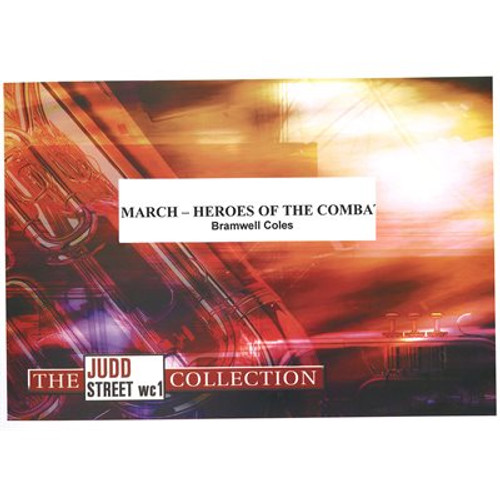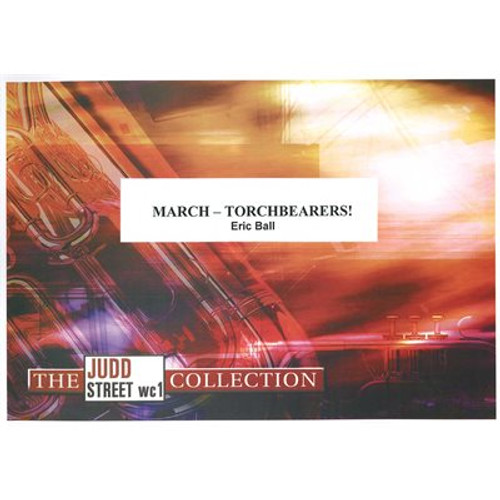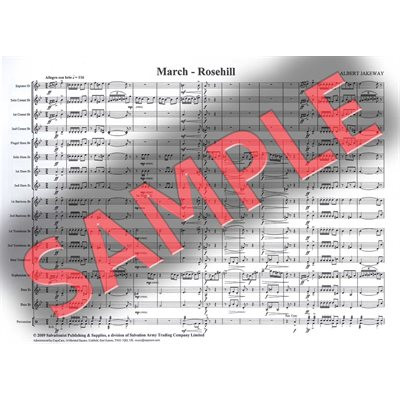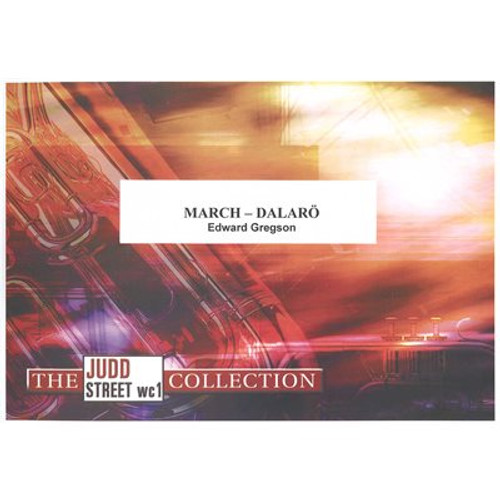Product Description
Comments by Colonel Bramwell Coles
Introduction ᄀᆰ The strong, boldly-moving unison figure which occupies the opening bars must be played firmly, with full, compact tone. The same remark applies, of course, to the repetition of this figure which commences at the ninth bar. The many marks of accentuation, sometimes on the weak beat, must all receive due attention. Especially, perhaps, the chords on the second beat of bars 6 and 14 and the full-throated chord in bars 8 and 18, which corrects the accent.
Section A ᄀᆰ Although this section is marked forte, let the music move along with freedom and with absence of effort. Notice that in the figures given to 1st baritone, trombones and euphonium - where this group of instruments echoes the first part of some of the melodic phrases - a quaver takes the place of the semiquaver given to the melody instruments.
Section B ᄀᆰ This section brings a change of rhythm as the chorus Hallelujah appears, the melody of which is taken up by flugel, solo and 1st horns, and euphonium. An independent theme appears above this, and the melody cornetists must not regard this as of chief importance. the Basses have some rhythmic legato figures which help to bridge gaps, and these should be played with facile touch. Keep this section well down to the dynamic indicated in order that it stands in good contrast with the stronger sections by which it is bounded on either side.
Section C ᄀᆰ The first and third phrases of this section are in the form of a bass solo. Watch the tuning of the low note on which this commences, and see that the accented notes are given due attention.
Section D ᄀᆰ Following two bars of introduction in which the new key is established, the trio melody is introduced by 1st baritone and euphonium. This must be vocal in style and very smooth. Make good use of the swell, and in the bars where some brighter color is shone on the music by cornets and trombones, see that the melody is not overshadowed.
Section E ᄀᆰ There is a good deal of detail in this episodic section. Everything must be quite staccato and careful attention should be paid to the changing dynamics. A clean use of the tongue is essential, especially from the fifth bar onward.
Section F ᄀᆰ The trio theme reappears here, the melody this time given out by the brighter-toned cornets and tenor trombones, with aid at various points from other instruments. Again see that this is cantabile in character, the rendition of the music suggesting dignity and valor
(view series guide)
Produced by The Salvation Army, SP&S, UK













